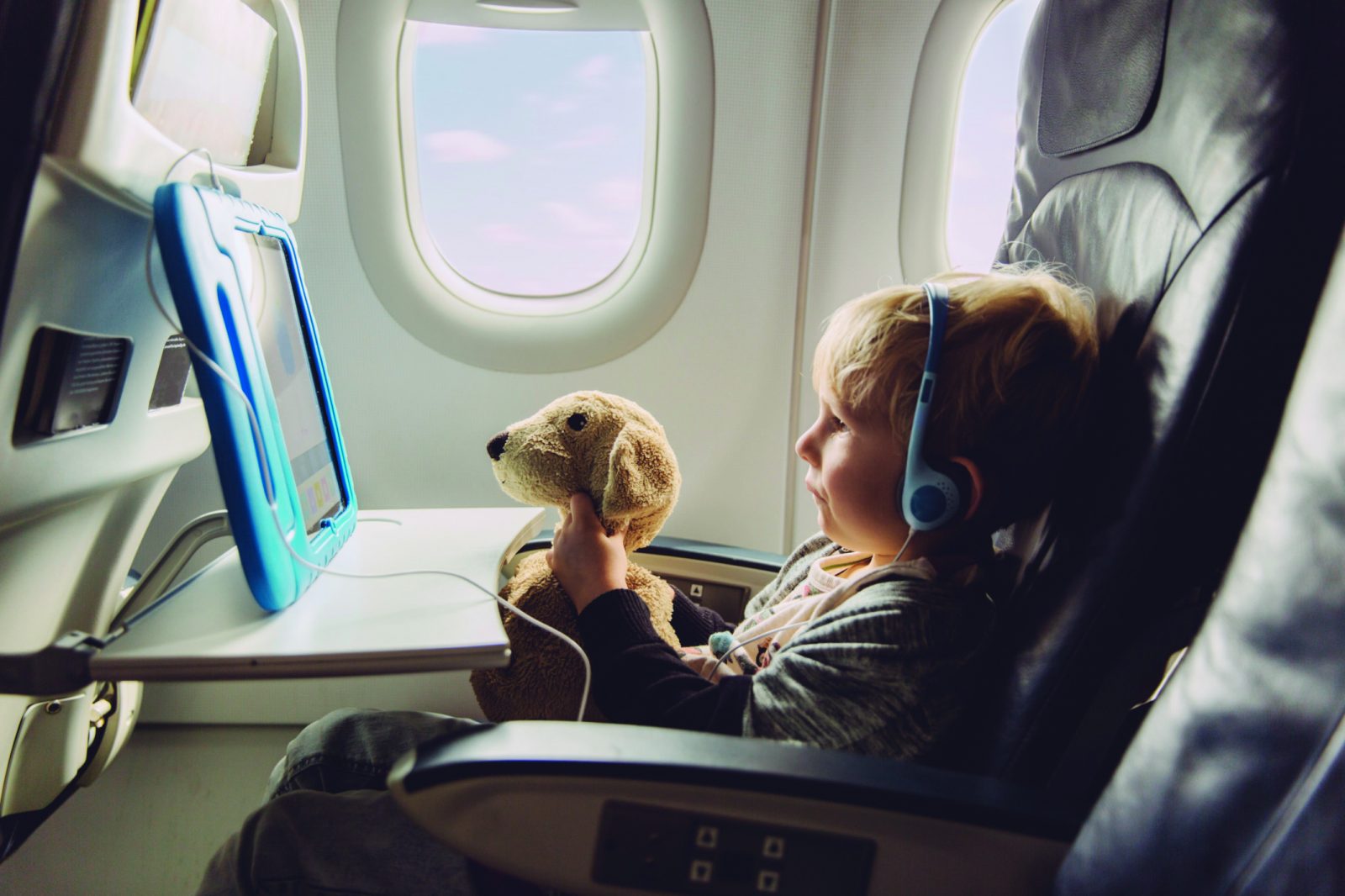
The wireless in-flight entertainment market is set to be worth a staggering $3.53 billion USD by 2025 – up from just $900.7 million in 2016. Traditionally, we’ve relied on airlines to provide us with seatback televisions, in-flight magazines and complimentary newspapers. The future, however, could look very different and the changes are happening right now.
The biggest slice of the market is still going to the adoption of in-flight wifi – now considered a ‘must have’ for many air travellers. Late adopters of the technology, such as British Airways are now reaping the benefits of the newest wifi systems such as Ka-band and air-to-ground (ATG) technologies.
ATG is said to provide 4G like internet speeds and in-flight wifi specialists, ViaSat has recently launched a new satellite that will provide uninterrupted wifi coverage across the globe. Now there’s a push to develop next-generation High Throughput Satellite technology that will easily withstand our ever increasing desire to stream HD TV shows and music in-flight.
But the really exciting change is coming in the form of ‘Bring Your Own Device’ or BYOD. A market research report by Grand View Research claims BYOD has seen ‘many’ airlines rip out their seat back screens in favour of providing streaming tech for passengers to access content on their own devices.
The report’s authors say our changing behaviour and the low costs to install streaming services is now allowing low-cost carriers to compete with legacy carriers with the provision of in-flight entertainment. Europe’s easyJet recently launched its ‘Air Time’ system using technology from Immfly and content from Rakuten. The low-cost airline plans to install the system across its fleet of 279 aircraft.
Another big player in the market is Lufthansa BoardConnect – they’ve developed a portable version of their streaming system, allowing airlines to quickly and easily install the system on older aircraft and even move it between planes depending on their needs.
The benefits for airlines are plain to see – traditional seatback TV’s are heavy and maintenance intensive. The cost to upgrade the systems is often prohibitively expensive, leaving passengers with a less than perfect experience. Instead, BYOD is light, cheap and simple to operate.
And of course, many airlines are finding ways to increase ancillary revenues – selling access to the latest Hollywood blockbusters, in-flight wifi packages and Duty-Free portals that encourage passengers to place an order on their own device.
For now, BYOD is mainly focused on the short-haul market using narrow-body aircraft. Some airlines insist the need to provide seat-back televisions will continue for a long time to come and have so far resisted the move to BYOD.
Instead, BYOD may actually be a huge cause for celebration – massively improving the passenger experience on flights where passengers would otherwise have to forego any in-flight entertainment.
Mateusz Maszczynski honed his skills as an international flight attendant at the most prominent airline in the Middle East and has been flying ever since... most recently for a well known European airline. Matt is passionate about the aviation industry and has become an expert in passenger experience and human-centric stories. Always keeping an ear close to the ground, Matt's industry insights, analysis and news coverage is frequently relied upon by some of the biggest names in journalism.







